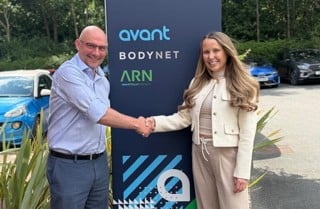Using telematics data to identify which vehicles could be switched to electric and "changing the narrative" on risk management were two recommendations from fleet managers.
The following points were raised at the Fleet200 Strategy Network meeting at Ashorne Hill, Leamington Spa.
> Interested in comparing electric vehicle data? Check out our EV tool.
> Interested in ensuring the efficient use of EVs. Check out our dedicated editorial sections: Insight & policy | EV news | Charging & infrastructure | Costs & incentives | Benefit-in-kind | EV case studies | EV road tests
Using telematics data to identify which vehicles could be switched to electric and "changing the narrative" on risk management were two recommendations from fleet managers.
The following points were raised at the Fleet200 Strategy Network meeting at Ashorne Hill, Leamington Spa.
What measures have you taken to reduce incidents and the likelihood of incidents?
- Introduced e-learning based on statistics from accident management company and telematics installed in vehicles. If there’s a high category of speeding offences, driving incidents (whether it be third party involved or not), drivers are placed on a target list and provided e-learning to suit what problems they are causing
- Green driving network to change driver behaviour through training, monitoring, reward, and communication. The scheme could potentially expand to putting all drivers through fuel efficiency and incident-related programmes
- Putting 'top 10' drivers on contracts to encourage drivers to achieve a higher standard of driving
- Introducing digital cards stating domestic driving/EU hours rather than writing in a book – highlighting to drivers that it is for their safety and best practice
- In-cab cameras to provide instant access to evidence in the event of an incident. When used with app to carry out pre-use vehicle checks, information is available to download instantly and is sent as an email to dedicated people so that vehicle defects can addressed. On the app, drivers can see if the defect has been resolved and can challenge if it hasn’t been.
- Audit trail online is better than paper-based – ability to challenge transport managers all over the country on how may outstanding, active and serviceable defects vehicles may have
- Offering electric vehicle (EV)-only company car scheme – driving an EV could help with driving risk management as it offers a “nicer driving experience” – less noise from diesel engine and no repetitive strain injuries (RSI) from changing gears
What data do you use to measure performance and what do you do with the findings?
- Vehicle dwell time could be used to help identify which vehicles could be switched to electric and which chargers could be used based on a vehicle’s location at different times
- Same data for managing driver risk (accident, wear and tear, insurance) can be used to manage environmental risk – business risk and changing to electric – however, important to ask how is it managed?
- Share anonymised telematics data with drivers and discuss the incentives, not just come up with a list of figures and statistics. If you see a driver not reaching driving standard, reach out to them let them know that company is trying to raise profile at the depot and to encourage them to discuss amongst other drivers – so ideas are "not always coming from the top”. Telematics in vehicles also must come from the top-down, says one fleet
- Fleets reported risk is easier to manage with telematics because of the data – but is the data being managed and importantly, is the right data being managed? Traffic commissioners will also ask what is being done with data from telematics and app
Challenges
- Drivers being opposed to change when introducing new app for carrying out pre-use vehicle checks. To tackle this, buddy up drivers with a younger driver
- Lack of younger drivers entering the industry
- Existing drivers do not class themselves as drivers – they focus on the technology aspect of the role and see themselves as engineers or electricians, for example. Important to remind them that they must drive to jobs and that their speed and incident rate will be monitored
- Change the narrative on what company is doing with risk management and safety – for example, on telematics and approach to managing drivers – highlight that they are being monitored via telematics as the company values them. It’s “not about beating them with a stick” - reinforce that the system is there to keep them safe as the company values them as an employee. Get drivers to engage and understand that it is them that can change
- Drivers think they are being spied on with in-cab cameras – highlight it is there to safeguard drivers and supervisors
- Possible driver licence change (derogation) “could kill business as its far too expensive” and increase in training
- Not having telematics in company cars due to personal use and issues around unions. Unions have issues with inward-facing cameras which is crucial from an HGV drivers perspective to identify if a driver is drowsy to encourage them to take a break - try to frame it as valuing them as employees
- Educating drivers on how to operate an EV, recharging it and maintenance of the vehicle – requires investment. Along with training workshop staff and investing in equipment to maintain EVs within a certain budget and obtaining the infrastructure to run EVs
- How to build new technology or use of new technology into existing risk management systems
> Interested in comparing electric vehicle data? Check out our EV tool.
> Interested in ensuring the efficient use of EVs. Check out our dedicated editorial sections: Insight & policy | EV news | Charging & infrastructure | Costs & incentives | Benefit-in-kind | EV case studies | EV road tests
Login to continue reading.
This article is premium content. To view, please register for free or sign in to read it.
























Login to comment
Comments
No comments have been made yet.